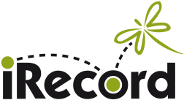Hi,
I am trying to determine whether iRecord butterfly related data is being passed to the NBN Atlas and how up-to-date its records are.
I have 49 verified records for one butterfly species in one 10km square covering the period 2014 to 2022.
None of these records appear in an NBN Atlas search. For that square and time period there are 34 records all of which are marked as from WCBS or non-avian taxa (BTO+partners) datasets.
Reviewing the Atlas database list I do not see any iRecord butterfly references.
Can anyone confirm if verified 'casual' (i.e. non-transect) iRecord butterfly records are passed to the NBN gateway for Atlas inclusion?
I am confused what value the NBN Atlas provides if if doesn't include such fundamental datasets such as this one from iRecord. Am I missing something here?
Thanks
Comments
NBN Atlas
Thanks for that link Barry.
I am trying to obtain records of sightings within a geographic area so I can better decide where to walk to fill in gaps in distribution.
I know some local Butterfly conservation branches have 10km square and individual species champions, but that's not practical if you are visiting different areas of the UK.
NBN allows record export (but doesnt include butterflies). iRecord does allow record export, but only your own records.
Does anyone know the best way to gather comprehensive butterfly data? I am proficient with tools such as Excel and QGIS and just need the raw data. If there are data privacy concerns then information such as recorder name, or location of sensitive species can easliy be removed or blurred.
Thanks!
Butterfly Data
I'm not sure about the "best" way to gather butterfly data. However, you could consider using GBIF, which can aggregate data from many sources (including the UK Butterfly Monitoring Scheme), and has an extensive API for accessing occurence data.
GBIF
Thanks Barry.
GBIF appears to contain UK Butterfly Monitoring Scheme (UKBMS) and Wider Countryside Butterfly Scheme (WCBS) data up to 2020 but nothing more recent. There are a couple of other minor local area datasets.
It seems odd that there isn't an online, national, downloadable and up-to-date dataset that can be used to help focus recording effort. iRecord has a lot of data but it isn't easily accessible.
Is anyone able to provide any further pointers or information on why such data is not available?
Thanks.
Data sharing decisions are made by individual recording schemes
Hi All, Butterfly conservation (BC) is responsible for the verification of all butterfly data in the UK, whether it is collected via one of the surveys on their website, or iRecord. Decisions regarding data-sharing are made by BC, and their overall policy on data availability can be found here for moths, for example (https://butterfly-conservation.org/moths/recording-moths/access-to-data) and this explains whey they have made the decision not to share all data with the NBN Atlas.
Re: GBIF
GBIF also has the iNaturalist Research-grade Observations dataset, which includes a fairly large collection of recent UK butterfly records (about 90k from 2020 onwards). Most of these records have also been imported into iRecord (about 65k from 2020 onwards, of which about 40k have so far been accepted as correct).
You can of course view these records more directly in iNaturalist itself, which will allow you to filter the records interactively: e.g. UK 2020 to present Research Grade Butterfly observations. There are also projects set up for all the British Vice Counties, so you can easily filter by VC (e.g. West Sussex) - or you can create your own custom areas. This can all be viewed without registering, but If you want to download the records, you will need to create an account. There's also an iNaturailst API, which you can experiment with interactively through your browser - or if you know the Python programming language, there's also a pyinaturalist package which will allow you to quickly get started with programmatic access. (Note that these APIs are read/write once you have an account).

Please see this help page: Sharing data with the NBN Atlas.
As you can see, there's currently no scheme listed there that takes butterfly data. And I can confirm that when I list all my own NBN records, none of the 500 or so butterfly records I've uploaded since 2015 are shown (nor any of my nearly 400 moth records, either).